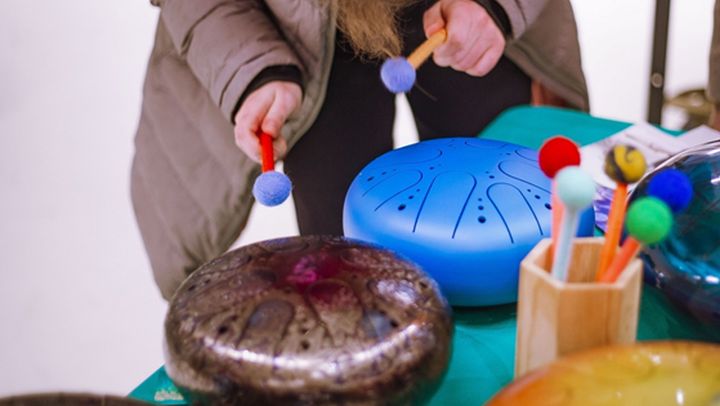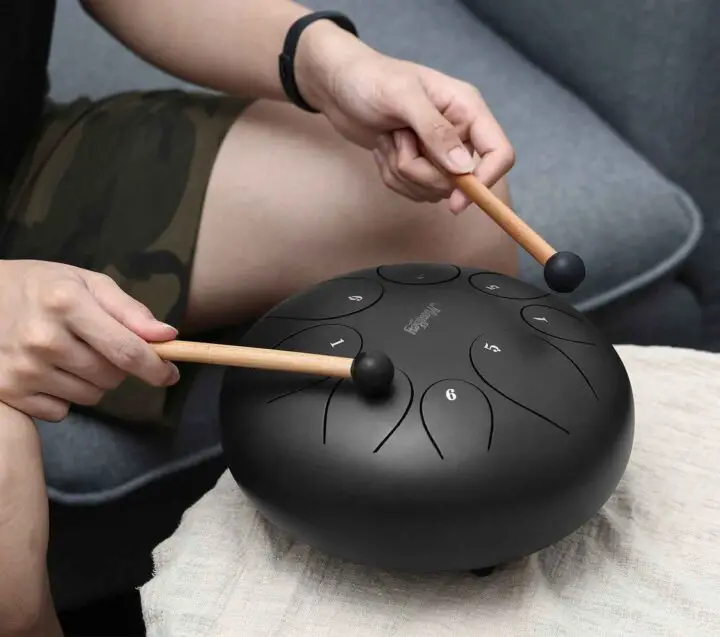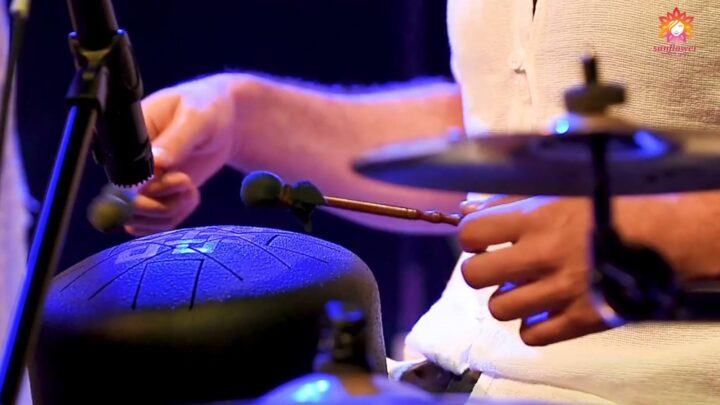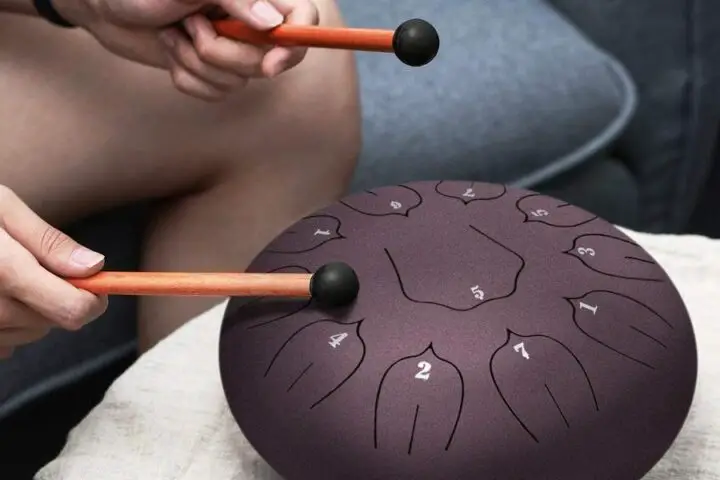How to Start Playing Tongue Drum: 5 Steps

A tongue drum, also known as metal hand drum, is a great instrument for street jams, drum circles, and even small bands. The best thing about that instrument is that it takes little to no musical knowledge and experience to start playing it. But it does not mean that you can run into a random tongue drum and play it like a pro in an instant.
Simple as it is, tongue drum (also known as tank drum) requires some learning anyway. Here are the steps to take if you want to master this sort of music. Not that these are hard, but still they are important. Learn more on simplydrum.com.
Choose the Drum

Unlike other instruments, tongue drums are all different: the number of tongues, the tuning, the way they sound always varies. No wonder, given that this instrument was born as an always custom one. The difference that matters the most is about ease. Another important thing is scale: there are minor, major, or Japanese scales to choose from. But this is a pure matter of taste.
If you have just begun learning, you better choose something simpler. There are quite sophisticated tongue drums that can be finely tuned to switch between scales. They are a good choice for an advanced musician. But as a beginner, you better settle for a simpler model, easier to master and – which matters too – less expensive. As for size, this sort of drum is supposed to be carried easily. On the other hand, a smaller one may turn out too tight for big-handed players.
There are parameters you may find important, like the size of the drum, the number of tongues (the fewer the easier), tunability, and so on. The principle, though, remains the same. The more you learn, the more sense it makes to switch to a more advanced tongue drum, with more tongues and better adjustability.
Learn the Notes

A tongue drum is a scaled instrument – that is, you can play notes with it (unlike a regular drum). Each tongue is responsible for reproducing a certain note. The number of tongues may differ for different models, especially if they are by various vendors. There are major, minor, pentatonic, and other tongue drums. The developers usually choose only notes that form harmony in every combination possible.
As you advance with learning single notes, you may try playing chords, hitting two or more tongues simultaneously. Not that it is that easy: it requires good musical ear as well as good to perfect timing. What helps a lot is that in many drums, the shape of each tongue is unique; in addition, they may be marked. This makes notes easier to link to corresponding tongues while learning.
Train your musical ear any other ways you can – from playing real musical instruments if you own or can access them, to using software trainers. The latter mostly deal with virtual keyboards or guitars, but when it comes to general musical ear, this helps just as well.
Find the Music
As each tongue drum model is unique, it usually comes with a songbook where popular songs are arranged for it. If you order a new tongue drum on some large online store, it will almost certainly include a manual and a songbook. More than that: on social media you can find groups about the same model where players may share their own records and song notations.
With a good musical ear (as you play you may find out yours is better than you expected – it’s a matter of practice) you can pick most songs. Not each and every one, though: it depends both on the song and the model of your drum. Some of them are just incompatible. Others, though, may sound surprisingly great on it.
Often you can find more songs online. Though they may be arranged for different drums, some of them can be closer to yours than others, and you will have very little (if any) work to do.
Last but not least: along with the right notes, any song requires the right tempo. And here we proceed to the next step.
Choose Your Technique

It’s a commonplace approach that the best way to hold your tongue drum is so that the bass tongue (that of the lowest key) is the closest to you. The rest, though, is completely up to you. The manufacturer may issue some instruction on how to play their tongue drums better.
The technique matters also because when you control your moves you can control your timing. So playing the song in the right tempo gets way easier when you don’t waste seconds on remembering which tongue is responsible for the right note, or whether it’s better to play a certain note with your finger pad, or tenderly with a fingertip, or harder with a knuckle. Or with mallets: this method is also popular, as mallets provide different feel, different touch, and, after all, a different sound.
You don’t have to stick to one technique. You may find out that different songs (or even parts of the same one) require different approaches. So varying it is the way; to do so, though, you need to master more than one way.
Experiment!
Having mastered the basics, you are free to find your own ways. It’s in the DNA of the tongue drum, a custom invention from the very beginning. Playing it in an irregular way is always a good idea, as long as it sounds good. Given the initial setup, it’s hard to make a steel tongue drum sound bad.
Give it some time. Watch others play, especially if their drums are different. Try and hear how it would sound on yours. The result can be astounding.
Don’t feel scared or ashamed to share your experiments. Play for your friends, family, or colleagues. Share your records and videos on social media, especially in groups focused on tongue drums. Other musicians often feel the same. They can share their own experimental ideas which you can embrace or develop further.
Share!
Music is a social art. While a painter or a writer can create their masterpieces in an ivory tower and only go out with finished pieces, music is a form of communication; it’s dead without listeners. So share your art, spread it around, pour it out into the air. And share this on Facebook or Twitter if you like it. If you have something to add, we’d like to read your comments – just as much as we like listening to the music.
